RAF Bathtub Morse Key
The Bathtub Morse key gained its name from its shape and was used in WW2 for British bombers where it was thought high levels of fuel fumes could be ignited by unprotected sparks from Morse keys
Morse Telegraph History Includes:
Morse telegraph history
Morse keys development
Vibroplex & mechanical bug keys
Telegraph sounder
Morse inker
Samuel Morse
Fascinating facts
Morse code SOS message
Morse keys:
Clipsal key
Camelback
Walters Electrical Patt 1056A Post Office key
Steel lever Morse telegraph key
RAF Bathtub Morse key
Samson ETM-5C electronic keyer
One notable Morse key was what is often termed the RAF 'Bathtub' key in view of its rather unusual shape.
The key was developed for operation by the British Royal Air Force, RAF, where a sealed key was needed. It was initially used in open cockpit aircraft like the Fairey Swordfish (the aircraft the torpedoed and disabled the Bismark).
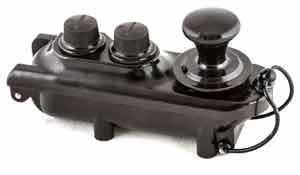
The Bathtub key was used most widely with the radio communications set-up in the heavy bombers used by the RAF in WW2. This was because it was thought that high levels of aviation fuel could be ignited by the sparks from the Morse key on board the aircraft and this might lead to an explosion.
The Bathtub key saw operation in many British bombers during the war and in collectors circles it has gained a certain curiosity value, although today, it is rarely used.
The key was known as the Type 7741 with versions labelled 10A/7741 and 10F/7741. - the version shown in the photos is the 10A/7741.
Electronic Waveforms: sine square, rectangular, triangular, sawtooth (ramp)
Bathtub Morse key construction
The Bathtub Morse key has a rather unusual construction. The key mechanism is totally enclosed in a two part Bakelite housing that has similarities to a bathtub and this gave rise to its name.
The key mechanism was actually attached to the top of the enclosure and it operated upside down. Inside were the usual adjustments for contact gap and tension.
The bearing for the lever of the key was rather rudimentary. It consisted on a "V" notch cut across the lever into which a rod connected to the mounting points was located.
There was also sealing around the point where the operators handle or knob enters the main housing - a leather diaphragm was used which gives integrity to the spark / gas protection whist also allowing movement.
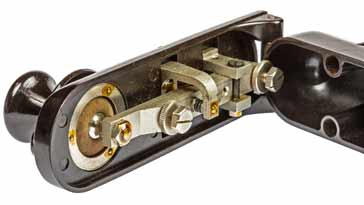
The bathtub key also had a feature whereby the cover clip could be pulled up over the skirt of the knob on the key to keep it down and thereby making continuous contact for a continuous transmission. This could be useful for tuning up the transmitter.
It could also be used to aid rescue if the aircraft was downed and the transmitter was still operational, allowing a bearing to be obtained on the signal being transmitted.
Whether this was ever successfully used in action is not known, but it is unlikely it was widespread practice because the crew would be more focussed on exiting the aircraft and if it ditched in water it would very soon sink.
As the key was totally enclosed it was also possible to use it in old open cockpit planes such as the Fairey Swordfish.
The sealed nature of the key also protected the operators from the very high voltages that might appear across the key which could rise to figures of 1 kV when used with some transmitter / receiver combinations used for radio communications in this era.
In terms of the dimensions the Bathtub key was approximately 2 ⅞ inches (7 cm) high, 1 ⅝ inches (4.2 cm) wide and 5 ⅜ inches (13.8 cm) long. It weighed around 8 ½ ozs (238 grams).
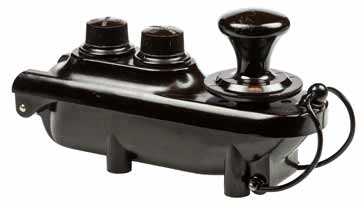
Use of the RAF Bathtub Morse key
This type of key was used as standard before WW2, during WW2 and then afterwards. Indications seem to say these keys were manufactured from about 1930 and some reports say they were still in production in 1967, although this is not certain.
Many of the keys were made at a factory in Mill Hill in London and some were manufactured elsewhere.
The Bathtub key was standard issue for the radio communications systems for many aircraft and in particular for the British WW2 heavy bombers including the Avro Lancaster, Halifax, Stirling, Wellington and many more planes.
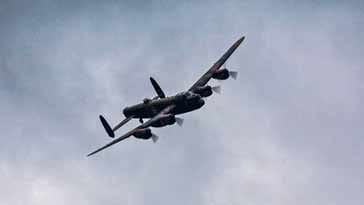
This key was often used with the T1154 transmitter and R1155 receiver combination and the predecessors namely the R1082 / T1083 combination.
Thus the key was widely used for radio communications from the aircraft to their base and it is almost certain that this form of key was used to send the messages back from raids such as the famous "Dambusters" raid over Nazi Germany.
These keys were also used by Air / Sea rescue launches where the turbulence from the seas as well as the wet environment meant that a robust and protected Morse key was required.
In use
Although the Bathtub key is certainly an interesting key with very many associations, it is rarely used by Morse enthusiasts these days.
The key has a very heavy and rather unfriendly feel to it, making operating using the key rather difficult and tiring over long periods of time.
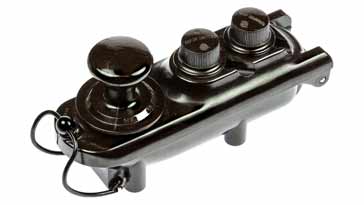
The heaviness results from use of a spring-loaded "V" notch scheme. This is used instead of the normal bearings that are used on other keys so that they key would be more robust than other types.
This was necessary because the wireless operators on these planes needed to wear gloves because of the long periods of cold they endured. Also the planes could often be tossed around by turbulence as well as enemy fire.
Also with the operators often using heavy gloves to protect them agaisnt the cold int hese aircraft, it was probably no bad things that the key was heavy to use.
The RAF Bathtub Morse key is a particularly interesting form of key which was widely used for military radio communications from aircraft in the 1930s, and 1940s. Although it is not the nicest key to use, it certainly served its purpose and was widely used by British and Canadian forces.
 Written by Ian Poole .
Written by Ian Poole .
Experienced electronics engineer and author.
More History:
Radio history timeline
History of the radio
Ham radio history
Coherer
Crystal radio
Magnetic detector
Spark transmitter
Morse telegraph
Valve / tube history
PN junction diode invention
Transistor
Integrated circuit
Quartz crystals
Classic radios
Mobile telecoms history
Vintage mobile phones
Return to History menu . . .




